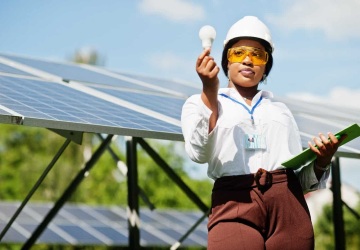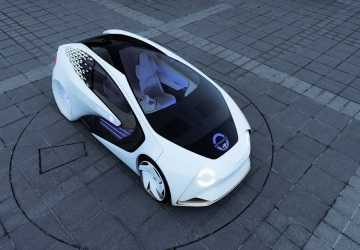In today's fast-evolving world, the focus on sustainability has never been more prominent. As the ramifications of climate change become evident, homeowners are increasingly turning to renewable energy systems. These systems are not just environment-friendly; they promise substantial savings in the long run. As home integration of these systems becomes more commonplace, our step-by-step guide will break down this seemingly complex process.
Understanding Renewable Energy Systems: More Than Just Panels and Turbines
Understanding the fundamentals behind renewable energy systems before making any decisions is necessary. In addition to well-known technologies like solar panels and wind turbines, there is an excellent variety of other technology. These developments, which range from solar water heaters to biomass power plants, are intended to harness the boundless potential of the natural world. Their primary objective is to lessen their reliance on fossil fuels while advancing the cause of renewable energy in the future.
Step 1: Deep Dive into Your Energy Consumption
You will first need an accurate picture of your energy requirements before deciding on a renewable system. Look over your bills carefully rather than simply giving them a quick scan. Identify any repeating trends in the things you consume. Your energy usage may be higher in the summer because of your air conditioning and in the winter because of your electrical heating. Recognizing these patterns will lead you in the direction of a system that is tailored to meet your specific requirements.

Step 2: Geography Matters: Understand Your Region
The efficiency of renewable energy systems largely depends on geographical factors:
·Solar Power: Sun-drenched regions are prime candidates for solar installations.
·Wind Power: Coastal areas or elevated regions often experience consistent wind patterns suitable for turbines.
·Geothermal Energy: Regions with volcanic or seismic activity can tap into the Earth's internal heat.
Local climate studies or government resources can offer insights into which energy source is most viable for home integration in your area.
Step 3: The Financial Aspect: Planning Your Budget
Although the advantages of using renewable energy sources cannot be refuted, the first financial expenditure may be relatively high. Investigating beyond just the price listed on the product or service is essential. Research the possibility of receiving tax breaks, refunds, or incentives. The initial costs are often outweighed by the savings in energy over the long term, but having a clear financial strategy can aid in making informed decisions about the future of your business.
Step 4: Vetting Providers: A Crucial Decision
Your method for generating renewable energy is only as reliable as its provider. Choose well-known organizations for their quality, service, and the terms of their warranties. Remember that you are not merely purchasing an item but investing in a long-term solution.

Step 5: Installation: More Than Just Setting Up
Putting solar panels on your roof is one of many aspects of this discussion. It is a matter of optimizing their position so that they receive the most possible sunshine. In a similar vein, to harness constant winds, wind turbines need to be strategically placed. Even though they are buried, geothermal systems require careful planning about their depth and system layout. Reputable professionals guarantee the quality of the work.
Step 6: Seamless Integration with Existing Infrastructure
Any renewable energy system you install in your home must be compatible with the existing electrical infrastructure. This home integration encompasses technical factors such as using inverters for solar systems, ensuring no disruptions in the flow of electricity, and even feeding excess energy back to the local grid.
Step 7: Monitoring, Maintenance, and Mastery
Homeowners can better understand their energy generation and consumption trends because of the monitoring options included with modern systems. It is essential to perform routine maintenance. The production of electricity might need to be improved by factors such as dirty solar panels or broken turbine elements. Maintain a proactive stance by performing regular checks.
Step 8: Power Gaps: The Need for Backup
Despite its abundance, nature can be highly unexpected. Several circumstances could hinder energy production, including overcast skies, calm winds, or other conditions. Think of incorporating battery-based solutions. These can store extra energy and provide a backup if primary sources are depleted.
Step 9: The Learning Curve: Stay Updated
The field of renewable energy systems is constantly evolving. New technological advances appear regularly, each promising increased productivity or novel capabilities. Homeowners can continue maximizing the benefits of their home integration by regularly optimizing it when informed.
A Pioneering Move: Transitioning to Renewable Energy
Transitioning to renewable energy systems isn't just an eco-friendly decision; it's a pioneering move towards a more sustainable lifestyle. With increasing global awareness about the effects of climate change, the impetus for individuals and households to make green choices has never been more significant. And as electricity consumption continues to be a substantial chunk of a household's carbon footprint, the switch to renewable sources stands out as a definitive action against environmental degradation.
Analyzing Your Home's Potential
Every house has its unique energy signature, defined by its architecture, location, and inhabitants' habits. A detailed energy audit can provide an insightful roadmap before you plant a wind turbine in your backyard or plaster your roof with solar panels. By understanding shadow areas, windy zones, and even the soil's thermal conductivity, homeowners can determine which renewable energy system is their best fit. This in-depth analysis goes beyond generic advice and provides tailored solutions that ensure maximum energy yield and efficiency.
The Economics of Renewable Energy
Many hesitate to adopt renewable energy, fearing the initial costs. However, the economics of renewable energy systems become more apparent when looking at the broader picture. While the upfront costs can be significant, the long-term savings, combined with potential tax benefits, grants, and even the possibility of selling excess energy back to the grid, make this a financially sound decision. It's not just about monthly savings on electricity bills; it's about insulating oneself from the ever-increasing costs of non-renewable energy. Consider it an investment with dual returns – monetary benefits and ecological dividends.
Conclusion:
Home integration of renewable energy systems represents more than a trend—a movement toward a sustainable future. Every homeowner who takes this step contributes to a larger global mission: a world less dependent on finite, polluting energy sources. With this comprehensive step-by-step guide, the path to that future becomes a little more explicit.
















